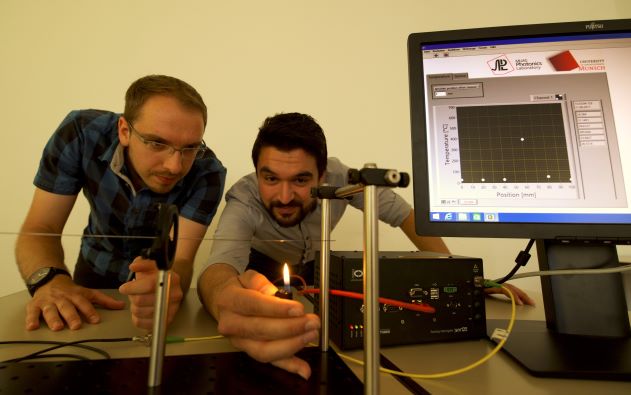-
Photonics LAB
The Photonics Laboratory
The Photonics Laboratory introduces itself
-
education
For Students
Here students will find all relevant information
-
Research
Research
Current research projects of the Photonics Laboratory
-
cooperation
Industry
For coopertion partners
-
Contact
Contact
How to reach us


Munich University of Applied Sciences Department Of Applied Sciences And Mechatronics
Research in Fiber Sensing (Fiber Bragg Gratings)
Photonics Laboratory
|
The Photonics Laboratory shows extensive research activity in the field of fiber-optic sensing using fiber Bragg grating technology at the intersection of research and application. The main focus lies on the development of high precision sensor elements and the associated metrology and the evaluation processes, which are optimal adapted to the particular application. This includes all applications in a rough environment, such as high temperatures, high electromagnetic fields or in medicine and applications in which the use of commercial electrical sensors is critical.
| |
|
This video demonstrates the high-speed fiber optical multi-point |
|
|
array for high temperature distibution measurements. |
|
|
This video reports on the scientific work of Ms. Berrang. |
|
|
This video reports on the scientific work of Mr. Bian. |
|
|
This video reports on the scientific work of Ms. Stadler. |
|
|
This video reports on the scientific work of Mr. Buchfellner. |

